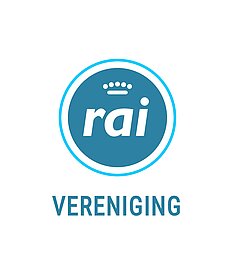VDL-ETS as a Driving Force in the Digital Infrastructure for Future-Proof Mobility Project

VDL ETS, together with 19 partners including TomTom, TNO, Heliox, and V-tron, serves as the driving force and catalyst for the Digital Infrastructure for Future-Proof Mobility (DITM) project. This project, subsidized by the Dutch government, brings together partners under the banners of RAI Automotive Industry NL and Brainport Development to work on implementing the digital infrastructure for automated transport.
The primary objectives of the consortium include achieving higher levels of autonomous driving, organizing mobility more efficiently and safely, and further strengthening the Netherlands' position as a leader in (digital) infrastructure, explains Glenn Haverkort, General Manager of VDL ETS, in the latest edition of GO!Mobility.
Innovative Vehicle Solutions
VDL Enabling Transport Solutions (VDL ETS), a part of the VDL Group, focuses on researching, developing, building prototypes, and testing new possibilities and concepts, particularly related to transport activities within VDL companies. "Our goal is to develop environmentally friendly, innovative hardware and software solutions for areas such as electric transport, battery technology, charging infrastructure, energy storage, Automated Guided Vehicles (AGVs), and guidance and navigation technology," Haverkort explains.
Within the DITM project, VDL-ETS is responsible for the so-called "Vehicle Systems" work package. This involves integrating and installing an autonomous driving system in a city bus and ensuring that it technically aligns with the other work packages. "We are also responsible for writing the user profiles and developing the use cases for the depots where these types of buses will operate autonomously."
Technology of Tomorrow
Participating in the project allows VDL-ETS, as a bus manufacturer, to contribute to the technology of tomorrow, gain more knowledge to integrate connectivity applications and autonomous functions in buses, bring them to market, and make them accessible to a wide audience. "The DITM project challenges us to look at the possibilities and limitations of certain technological developments in a different and much more detailed way."
Taking Over Driving Tasks
According to Haverkort, transportation as we know it is set to change significantly, partly due to DITM. "Our consortium focuses on automating vehicles, for example, by taking over or supporting the driver’s tasks. This relieves the driver and makes transportation safer and more comfortable. With the advent of fully autonomous vehicles, the role of the driver in public transport will gradually diminish over time. This process will happen in small steps, starting at depots. The DITM project is a first step towards realizing autonomous driving in the transport world and public transportation. A robust digital infrastructure is essential for this, and the reliability of data will be a key requirement."
Autonomous City Bus
The DITM project runs from October 1, 2022, to October 1, 2026. Haverkort considers the project successful if it generates a significant amount of new knowledge about technologies and products and provides more insights into the value of the developed use cases. "It should result in a working prototype of an autonomous city bus that can be remotely controlled in the depot, stop and depart automatically at bus stops, and more."
